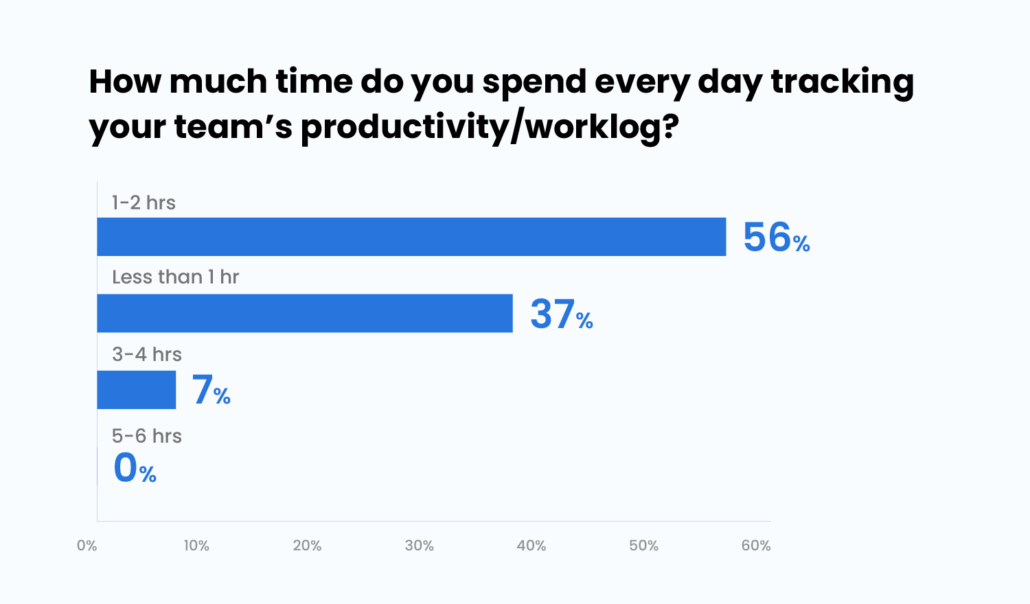Are you struggling to meet your sales goals? Feeling like you could be more productive?
To address this, we organized a webinar with Rohit Gupta, Co-Founder, College Vidya on how productivity tracking can help you meet your sales goals!
You can watch the webinar in its entirety or read the takeaways below.
Why you must keep track of sales productivity?
Nothing is more crucial to success than a sales force that is productive throughout the allotted period.
The perspective is straightforward: a salesman spends their time turning leads into customers, and how they spend their time will directly affect how much income they will produce. Since closing sales takes time and money, the investment in improving productivity is much lower than the profits you can reap.
You can efficiently forecast revenues by measuring sales performance and having the necessary data at your disposal. Additionally, it emphasizes the effectiveness of your sales operations and processes and assists you in evaluating how successfully your sales plan is being implemented.
The advantages are obvious, but you need a straightforward method to implement collective sales tracking that won’t increase your already demanding workload. You need tracking software that is easy to set up and keep up with; something that enables you and your team to work more efficiently.
Measure the sales process first
Although just a small percentage of businesses remove subjectivity from the process and genuinely know which leads have the best likelihood of converting, 57% of B2B corporations cite this as their top funnel priority.
The actions that salespeople might take to convert an early-stage lead into a new client are laid out in a repeatable sales process. A sales process has multiple distinct selling activities that make up each step.
You may monitor progress and outcomes by keeping track of how many hours your sales team invests talking with potential clients at each stage, as well as which tasks, they prioritize and which ones they avoid. The best part is that you can make sure sales teams concentrate their efforts on the top prospects based on the profiles of clients who have previously converted.
Recently we asked sales managers from different business verticals about the time they spend tracking their team’s productivity.
To our surprise, more than half of sales managers (56%) spend up to two hours catching up with their team’s worklog.

Managing the sales process and taking charge means knowing exactly how many leads were obtained, how many deals were closed, who the customers were, and—most importantly—how much time was spent selling to them.
How to track the performance of your sales team
Set achievable sales goals
“First, we have to define our sales goals. Only then can we track our progress. So, the first step in sales productivity is to set realistic, achievable sales goals.”
Rohit Gupta, Co-Founder, College Vidya
You can develop a solid foundation by giving your team well-defined sales targets to work toward. The best method to develop goals for your sales team is to involve them in the process.
While setting up goals, also define the sales KPIs that can help your team achieve those goals.
Mostly, sales managers and team lead track deals closed (52%), number of calls made per day per person (26%), length of the sales cycle (13%) and daily talk time per person (10%) among other granular details.

Set both short-term and long-term goals for measurement.
The best performance evaluation methods continue to place equal emphasis on short-term task completion and long-term performance. This combination of objectives and rewards aids in fostering a strong work ethic.
While setting weekly (or even daily) goals might help your team stay on target, the ups and downs of sales can easily demotivate your team. Longer-term objectives offer a more practical gauge of success in these trying circumstances.
Create a visual dashboard that considers all pipeline stages.
Your pipelines need to be filled at every level, so lead creation needs to be a continuous process. Lead qualification, scoring, and nurturing must logically follow. A solid sales funnel is built on a solid lead management system.
You require a sales CRM with features for pipeline management, sales monitoring, and instantaneous reporting for each of your SDRs.
Nearly 50% of salespeople refer to sales performance dashboards and 25% use a leaderboard when it comes to tracking pipeline activities.

With the help of LeadSquared’s configurable dashboard functionality, you can streamline your dashboard by keeping track of only the most important sales KPIs for your business.
Monitoring sales success with automation
Many small firms and start-ups initially monitor their sales success on a spreadsheet. Sales automation is the simplest approach to implementing a more effective sales monitoring system as you scale, though.
The goal here is to focus your team’s effort in order to streamline it.
You may easily visualize the precise data you are interested in to evaluate the effectiveness of your team with LeadSquared configurable sales reporting options.
Which sales activities must you prioritize?
The key steps in a typical B2B sales process are illustrated by the following example:
- Prospecting. This is the time spent reading up on your company’s knowledge base and researching your rivals to gain a better understanding of the problems your customers are facing and the value your product or service brings.
- Qualifying. The time spent identifying your ideal leads—those most likely to convert to customers—and determining how to approach them.
- Needs analysis. Recognizing the alternatives available to your customers (your competitors) and how to position your product or service as the greatest fit for them.
- Display of the good or service. Here is where excellent salespeople truly excel. It is crucial to show customers the value they will receive from their purchases.
- Proposal. This is primarily administrative in nature and takes longer than it needs to because of the substantial amount of time spent awaiting approvals or feedback.
- Negotiations. Addressing inquiries and overcoming concerns.
- The deal’s completion. The next step is to nurture the client, upsell similar goods or services, and solicit feedback.
To better understand how your salespeople use their time in each of the processes, it is crucial to flesh out the specifics within each of the smaller steps that each of them will decompose into. You’re looking for areas that frequently lengthen the sales cycle by a significant number of hours while producing minimal results.
Productivity tracking tools
The goal of sales performance management tools is to track sales progress and identify areas that need improvement.
- They provide scorecards for individuals and teams, giving clear details on progress and potential setbacks.
- With dashboards and leaderboards, many tools boost exposure.
- Administrators can organize sales competitions to encourage healthy rivalry among team members.
- The feedback offered can be used by leaders to decide what topics should be covered during coaching sessions.
- By making effective processes accessible and visible to new team members, the application can also aid with onboarding.
- Numerous CRM software integration tools exist for sales performance management.
CRM is the most widely used software in the sales domain. In our recent survey, nearly 41% of salespeople stated using CRM for productivity tracking.

Another lesser-known tool is WhatsApp. WhatsApp chatbots are becoming increasingly popular. These bots allow businesses to track engagement with customers and ensure that communication is efficient.
The email engines are not working properly, and a lot of emails are not being sent. This is causing a problem for everyone who uses email. CRM is a customer relationship management system that can help track everything that is happening with emails.
CRM software provides a variety of reports that can be very helpful in managing a sales team. These reports can track things like how much time is being spent on calls, or how many calls are being missed. This information can be very helpful in managing a sales team and making sure that they are productive.
LeadSquared CRM is a tool that supports the sales teams and managers with their activities and helps them to provide better services to their customers.
Audience Questions
Whatever product or service you are selling, you should believe in your product. If you do not believe in the product, you won’t be able to sell it in the market. This should be the first step to follow whenever the salesperson is being trained. You have to make them believe in the product, then only you can expect them to sell that product in the market.
The solution to the sales problem will come from technology. With GPS, we can track all of our field salespeople and see how many clients they meet every day.
Speaker

Rohit Gupta
Co-Founder, College Vidya







![[Webinar] Maximizing ROI with WhatsApp CRM](https://www.leadsquared.com/wp-content/uploads/2024/07/Maximizing-ROI-with-WhatsApp-CRM-webinar-popup.gif)
